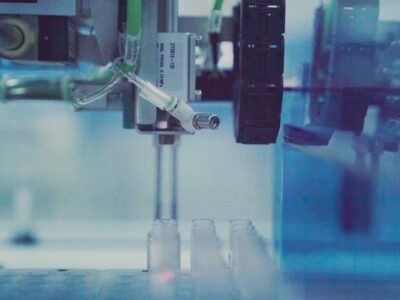Technology has impacted every industry in some way, including healthcare. Healthcare is so critical to the life of many people that technology must be used in a way that benefits patients and providers alike. Here are five ways technology is revolutionizing the healthcare industry.
Table of Contents
Telestroke And How It’s Creating More Stroke Survivors
This term refers to a patient receiving care from a mile away specialist using the latest in technology to communicate with their doctor. For example, a patient with a stroke is rushed to the closest ER for treatment. Doctors at the hospital cannot diagnose the patient’s exact condition due to there being no neurologist on staff at that location. Now what?
In this situation, mobile devices such as an iPad or other tablet can be used by physicians to access images and x-rays from patients, allowing them to have more information about patients coming in with possible strokes ready before they arrive. Once the doctors receive the information via their mobile device, they can determine how to treat the patient, who will then be transferred to a location to receive further tests and treatment.
Once they reach their destination, more medical professionals can see the information gathered at the original hospital via Telestroke technology, allowing them to have more information about these types of cases.
2. Robot-Assisted Surgery
With the rise of technology helping patients, it makes sense that robots can also help surgeons. With robot-assisted surgery, skilled surgeons can perform complex procedures with three-dimensional precision, resulting in less bleeding and faster recovery times. And since one robotic arm can function faster during a surgery procedure, patients are given an additional benefit not seen with traditional surgeries.
3. Nanomedicine and How It’s Impacting Health
The next frontier in medicine is Nanomedicine. Nanotechnology is the manipulation of matter at a size range of 1-100 nanometers, allowing doctors to give patients more targeted and accurate treatments than ever before. This means physicians can let their patients know if they are receiving the correct dosage or not, which can reduce the risk of potentially dangerous side effects.
4. Virtual Healthcare: Doctor’s Visits and E-Visits
The days of having to make an appointment with your doctor and schedule time off work for a doctor’s visit may be coming to an end. Thanks to things like Skype, doctors can examine patients using the latest video technology, allowing physicians to advise how best to treat certain conditions or illnesses. These new systems cut down on travel time and costs for patients while also giving them more flexibility when they get that check-up; after all, we all lead busy lives.
5. Wearable Technology Is Up and Coming
Wearable technology is making its way into our everyday lives, including the medical field! This includes items like FitBits that help monitor your activity levels throughout the day, reminding you to get up and walk around if you’ve been sitting for too long.
Wearable technology can also provide healthcare providers with information on patients’ vitals, giving them up-to-date information about the patient without disturbing them! Who wouldn’t want their doctor to have more information about their health when they are in the office with them? Hopefully, this type of tech will continue to improve so that doctors can access more data.
Technology has undoubtedly made its way into the healthcare system and hopefully will continue to do so as big data and wearable technology become more advanced! With new applications making their way onto the market every day, we can only imagine what other ways our lives will be made easier due to this technology.



















Comments